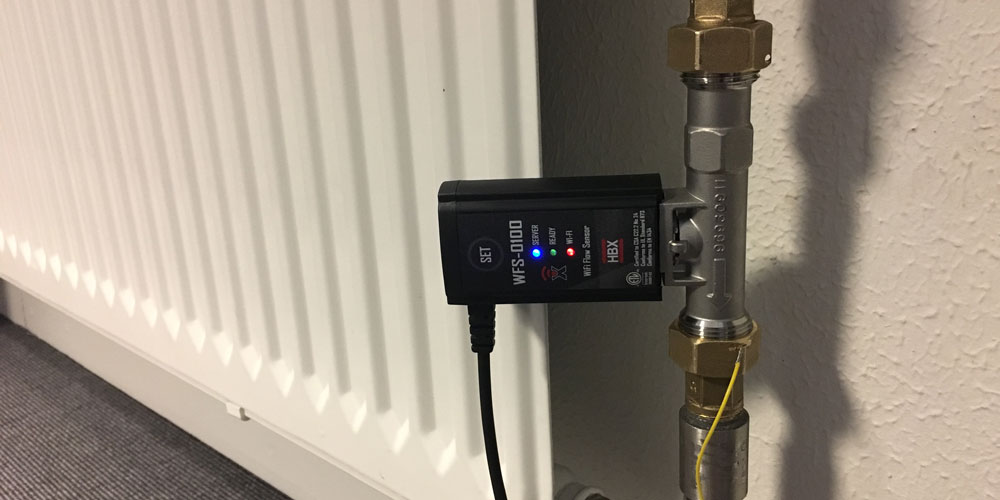BTU meters are also known as heat meters but I like the term thermal energy because “heat” excludes the possibility of calculating cooling thermal energy which some of these devices can also do. A thermal energy meter is a device that measures the amount of thermal energy used in a fluid system or how many BTU’s are consumed in a hydronic system over a given amount of time.
Said another way: a water meter measures the amount of water used, an electrical meter measures the amount of electricity consumed and a gas meter, you guessed it measures the amount of natural gas consumed at a location. Keep in mind that there are “metering devices” for all these but these devices are certified for billing purposes. This is a very important aspect as this makes them very accurate and as such there are some stipulations to using them that we will cover in here.
How do Thermal Energy Meters get a metered value?
The calculation for a BTU is FLOW (GPM) x DeltaT x 500. Let’s break this down. To calculate the thermal energy used in a hydronic system we need some flow, the temperature at the supply and the temperature at the return. Then there is this elusive number “500”. We may use 480 or 470 when we throw glycol into the mix but most don’t know why. This number is called the heat coefficient.
The heat coefficient of water is 500. Well of pure water anyways, but let’s not muddy the waters! 500 represents how much energy the fluid can hold. This number comes from a very complex calculation which takes into account the density of the water, the temperature and pressure of the system and if there is any glycol or other antifreeze in the fluid. It also includes another complex variable called enthalpy which basically means how much energy can be put into a fluid. Since you cannot put an infinite amount of energy into something, enthalpy basically tells you how much you can. This number will vary based on these parameters anywhere from around 300 all the way up to 500 or even a bit higher.
Calculating the energy isn’t enough though. A BTU value will vary so to get a perfect value over a given amount of time, it is important to take many measurements and add them together. Otherwise the actual value will be way out of range and customers will get billed for energy they didn’t use. So the calculator portion of the device is super important.
Inside A Thermal Energy Meter
Most energy meters use the same basic technology: a flow meter and 2 PT-100 or PT-1000 (thermistors) temperature sensors. Typically these meters require around 3 meters of length on the sensor that cannot be modified and so they cannot be installed into many current heating environments or at least not very easily. That is because both leads for the input and output sensor must have the same resistance (exact same length). When you can’t modify that wire it becomes necessary to find a path to put the temperature sensor at the other end of the system.
The temperature differential is super important in the calculation and because they have to be within spec over a large temperature range. The differential of the supply and the return temperatures can change the outcome a lot, hence why the sensors have to be so accurate and calibrated to be less than 0.185 degrees C different from the factory.
This leads us to the different classes of Energy meters. Class 1 meters have an accuracy of less than +/-3.5%, and are extremely rare, Class 2, which most meters fall into, have a better than +/-5% accuracy and Class 3 have a higher than +/-5% accuracy. Each class features maximum permissible error or the total of all the errors that can happen with the device. This includes the calculator errors, the error from flow and the error on the deltaT. When the certification is done they total up all the deviations to find the total and then rate the class.
Thermal Energy Metering in North America
Thermal energy metering gets its roots in Europe where they have an entire industry dedicated to installing, maintaining and calibrating these meters. As these devices are used to bill customers they are certified and calibrated at regular intervals to ensure they start out and stay accurate for many years.
In North America we are just getting started with using thermal energy metering, in Canada the use of Measurement Canada Type approved meters will be mandatory starting in 2026, and I think it’s a really good thing to push for more energy efficiency. I am a firm believer thermal energy metering fits right in.
This is a guest post by Curtis Bennett C.E.T, Product Development Manager at HBX Controls. It was originally published as an article in HPAC Magazine. It has been edited for clarity and length. The image used in the banner is an HBX Controls, SensorLinx BTU meter


